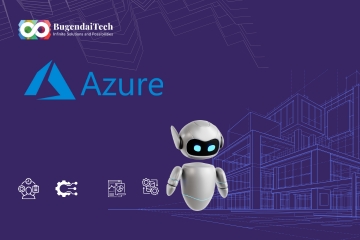Introduction
In 2024, the evolving cybercrime landscape presents new challenges for organizations and individuals. The interplay of AI-driven cyberattacks, the professionalization of cybercrime, and the increasing sophistication of threats are reshaping the cybersecurity domain.
What are Cybercrime Trends to Watch Out For?
AI-Powered Cybercrime
Advancements in artificial intelligence (AI) benefit legitimate endeavors and empower cybercriminals. AI-driven attacks are becoming more sophisticated, utilizing machine learning algorithms to bypass traditional security measures. Organizations must adopt AI-powered cybersecurity solutions capable of detecting and neutralizing emerging threats in real time to counter this.
Ransomware as a Service (RaaS)
Ransomware attacks have been a perennial threat, but in 2024, they've morphed into an even more menacing beast. Cybercriminals increasingly target critical infrastructure healthcare facilities and government agencies, causing widespread disruption and financial losses.
To combat this, organizations must prioritize regular data backups, employ robust cybersecurity measures, and invest in employee training to recognize phishing attempts.
IoT Attacks
The rise of Internet of Things (IoT) devices has expanded the attack surface for cybercriminals, who exploit vulnerabilities in connected devices to launch attacks ranging from DDoS to data breaches.
With IoT adoption continuing to soar, securing these devices is paramount. Implementing robust device authentication protocols, regularly updating firmware and software patches, and segregating IoT networks from critical systems can bolster defenses against IoT-related cyber threats.
Hacktivism and Digital Dissent
Hacktivism is rising, with cyberattacks increasingly aligned with political or social motivations. The symbiotic relationship between hacktivists and cybercriminals creates a complex threat landscape, making it challenging for organizations to identify and mitigate these threats.
What are the Practical Tips for Cybersecurity?
Invest in Security Awareness Training
One of the most effective ways to bolster cybersecurity defenses is by investing in comprehensive security awareness training for employees. Educating staff members on cybersecurity best practices raises awareness and empowers them to recognize and respond to potential threats effectively.
Human mistakes are still one of the primary causes of data breaches, making it crucial to address the human factor in cybersecurity. Businesses can drastically lower the likelihood of successful cyberattacks by offering training to spot phishing attempts, create strong passwords, and follow security guidelines.
Implement Advanced Security Measures
Traditional security measures alone may not be sufficient to protect against the increasingly sophisticated tactics employed by cybercriminals. Organizations should invest in advanced cybersecurity solutions powered by artificial intelligence (AI) to stay ahead of evolving threats.
AI-driven technologies can enhance threat detection capabilities, automate incident response processes, and provide predictive analytics to anticipate and mitigate potential risks. By leveraging AI-powered cybersecurity solutions, businesses can strengthen their defenses and minimize the impact of cyber threats on their operations.
Enhance IoT Security
The proliferation of Internet of Things (IoT) devices presents new challenges for cybersecurity, as these connected devices often lack robust security features.
Organizations should prioritize enhancing IoT security measures to mitigate the risks associated with IoT vulnerabilities. This includes regularly updating device firmware to patch known vulnerabilities, applying security patches promptly, and ensuring that default settings are secure.
Additionally, implementing network segmentation to isolate IoT devices from critical systems can help contain potential breaches and prevent unauthorized access to sensitive data.
Adopt Multi-Factor Authentication
Passwords alone are no longer sufficient to protect against unauthorized access to accounts and systems. Multi-factor authentication (MFA) adds an extra layer of security by requiring users to provide verification beyond just a password, such as a fingerprint scan or a one-time authentication code sent to a mobile device.
By implementing MFA across all systems and applications, organizations can significantly reduce the risk of credential theft and unauthorized access, enhancing overall cybersecurity posture.
Regularly Update and Patch Systems
Software vulnerabilities are a common target for cyber attackers seeking to exploit weaknesses in systems and applications. Organizations should prioritize regular software updates and patch management to mitigate this risk. This includes installing security updates as soon as they become available, implementing automated patching solutions where possible, and conducting regular vulnerability scans to identify and address potential security gaps.
Conclusion
As cybercrime becomes more sophisticated and prevalent in 2024, organizations and individuals must stay vigilant, adopt advanced cybersecurity measures, and prioritize security awareness to protect against evolving threats.
Understanding the critical cybercrime trends in 2024 and implementing proactive security strategies makes it possible to navigate the complex cyber threat landscape effectively.






Comments